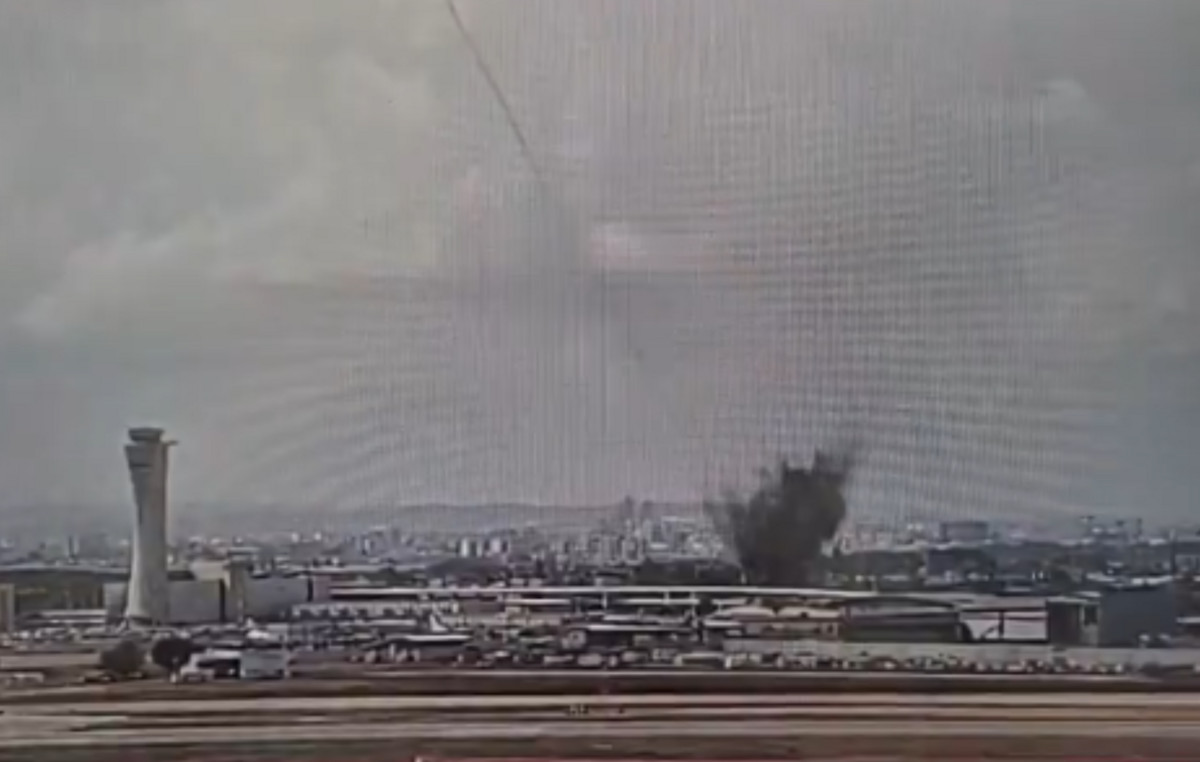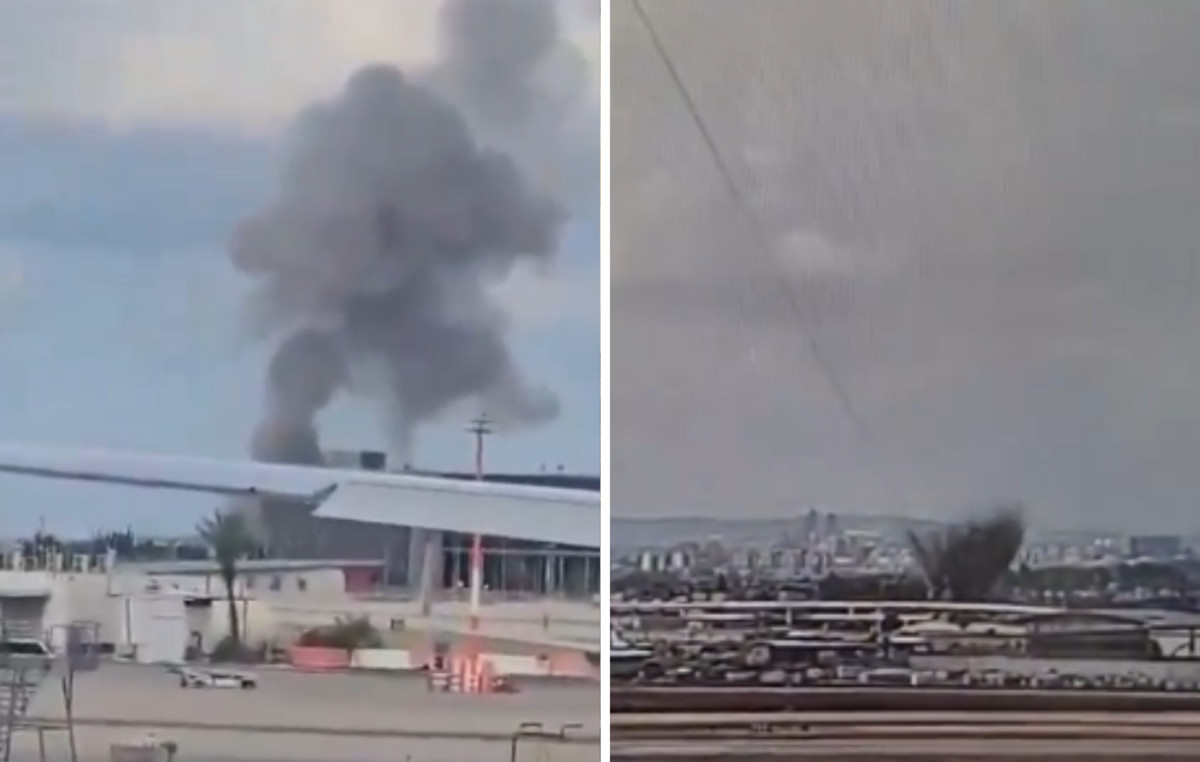The body lay across the street from Ivan Fedorov’s house for several days. Fedorov did not dare to leave, so he never found out who the dead man was. All he knows is that he was a civilian.
“He was just a passer-by who got shot,” Fedorov told the CNN .
At 90, Fedorov and his wife Iryna, 84, have spent their entire married life living in the same house on Yablunska Street in Bucha, the town north of the Ukrainian capital of Kiev that has become synonymous with Russian atrocities and alleged war crimes.
Their street – named after apple trees – is where the Ukrainian army found the bodies of at least 20 civilians after recapturing Bucha in early April. Some had their hands tied behind their backs.
A year has passed since Russian troops arrived, and the city is struggling to come to terms with the horrors it has suffered. There are works on every corner and the cleaning operation is almost finished. Residents, however, remain scarred.
Around the corner from the Fedorovs’ house is Vokzalna Street, where a column of Russian military vehicles was trapped during heavy fighting last March.
Almost all houses in Vokzalna were destroyed and most are now being rebuilt with the help of foreign donors and volunteer construction workers, who work for minimum wage, food and housing.
Long wooden beams have recently been delivered to several homes on the street; some are still piled up on the side of the road, others are already on top of the roofs that are being restored.

Kostiantyn Momotov’s home – where the 70-year-old lived for nearly four decades – was hit several times during the month-long occupation. When the Russians finally withdrew and he began to clear the wreckage, he found body parts among the rubble in his backyard.
“Five houses north of mine caught fire from the burning vehicles and ammunition and the soldiers were blown to pieces. His hands, legs and limbs were everywhere,” he said.
Money and volunteers come and go, so he’s prepared for repairs to take a long time. “I’ve built enough in my lifetime. Now it is with my grandchildren, ”he said.
psychological impact
Efforts to clear and rebuild Bucha began almost immediately after the town’s reconquest and some areas seem almost back to normal. But Andriy Halavin, the Orthodox priest at St. Andrew’s Church in the city, says the recovery is mostly superficial.
“When you look at [Bucha] now, you may not even realize that something has happened,” he said. “So a lot of people who come to Bucha now won’t understand what everyone is talking about. The sky is blue, the grass is green, the birds are singing… what war crimes are you talking about?”

Bucha officials are trying to find ways to honor the events that took place a year ago. Photographs taken in the first days after the reconquest are on display in a separate hall in the church. Many are extremely graphic, depicting victims of some of the worst atrocities.
On a small patch of scorched earth on the road leading to Bucha is a graveyard of blown up Russian tanks and burnt-out military vehicles. It has become something of an attraction in recent months, a place Ukrainians make a pilgrimage to see what their victory looks like.
Bucha district authorities are building a fence and official entrance to the site in an attempt to make the space more “civilised”.
Father Andriy cared for his congregation during the darkest times. He was there when the tanks arrived and later during the exhumations of bodies in mass graves, including one found in his own cemetery.
“It is easier to restore material things. We still do not understand the psychological state of people. Not just Bucha residents, but all Ukrainians. Because there is not a single family, not a single person who has managed to go through all these challenges without any psychological damage, ”he said.
He said that each person in the community was suffering in their own way. And each was trying to find a way to accept the past.

Tetiana Yeshchenko, 63, said she found relief in a place she never expected.
She said that before the war the only prayer she knew was the “Our Father”. So when Russian troops took the city and Yeshchenko decided she needed to pray, she just repeated the same prayer over and over again.
“The louder the explosions, the louder I was praying,” she said. “When I heard the shots, my knees and hands started to shake and I started praying more loudly, and in time the shaking subsided.”
She prayed when the Russians killed her dog and searched her home. She prayed as the soldiers spoke to her four-year-old granddaughter, who boldly told them they should leave. She prayed when family members were told they could leave, only to be sent back when they tried.
Yeshchenko is convinced that prayers are what got her through the worst of the past year. She said that after the reconquest of the city, when the immediate danger had passed and she was left with her thoughts, she fell into a deep depression; at this point, she went back to praying.

A year ago, Yeshchenko rarely went to church and did not consider religion a big part of his life. Now she spends her days working alongside Father Andriy at the church. She sells gold-framed candles, rosaries and icons and patiently speaks to visiting delegations about the impacts of war.
She continues to pray – including for her recently drafted son, who is currently fighting in Bakhmut, in eastern Ukraine. “Working here helps. And pray. I come home and read the ‘Our Father’ 40 times,” she said.
A short lived dream
Before Bucha became synonymous with unimaginable war crimes, it was a quiet, leafy place, the kind of green suburb with good schools where young families aspire to live.
For 31-year-old Nastia Mykolaietz and her husband, that aspiration became a reality just four months before the outbreak of war. They bought an apartment in Bucha, next to the modern Epicentr shopping centre. They moved in and started renovating the bathroom. And they were enjoying their new life.
The dream didn’t last long. On February 24, the family was awakened at 5 am by Mykolaietz’s mother, who called to let them know to leave immediately. They grabbed a few things – some clothes, a laptop and a potty for the little one – and ran.
The plan was to get the kids to safety as soon as possible and then go back for more clothes and their cat, named Lisa. But they didn’t make it back that day. Conflict in the area has become very intense.
They returned 47 days later, expecting to find their apartment destroyed and the cat dead.
“We arrived and she was still there, completely bald and skinny but alive,” Mykolaietz said. “She ate from the garbage. The frozen fruit in my fridge melted and this was the puddle she was drinking from. It was covered in pieces of fruit.
Coming back was difficult for the family. The mall next to his home was completely destroyed, stores were closed and supplies were hard to come by.
Mykolaietz went to a Unicef help point to see if she could get her five-year-old son a doctor’s appointment. After a few visits to the centre, Mykolaietz, a former kindergarten teacher, discovered that there was an opening as a childminder and took the job. Now she spends her days with the local children, many of them deeply traumatized by the events of the past year.

“My son is still afraid of airplane noise,” she said. “Today he woke up, took his mask, his toy gun and said: ‘This is my checkpoint and I will defend it.’”
Lego is by far the most popular toy in the play space. Children love to build weapons, military cars and warships. On the playground, “air raid” is the game of choice.
“They run around joking and shouting ‘Air strike, everyone go to shelter!’” Mykolaietz said.
bodies have names
Iryna and Ivan Fedorov remained in Bucha during the occupation, even when they sent their children and grandchildren away. They stayed with Iryna’s disabled sister and their neighbor, who broke her arm when a missile hit her house.
“We were cooking outside, in our backyard, on the fire. I’m cooking and something is flying over my head with a hiss. But whatever happens, we think,” said Iryna.
They did not hide during the bombing, saying they saw no reason to.
“Where would we hide? At home? Then we would be under the rubble and no one would find us. At least if it happens in the backyard, people passing by can notice the fallen bodies,” said Iryna.
The couple survived, but many did not. More than 1,000 civilians were killed in and around Bucha during the occupation, according to Kiev region police.
International investigators from the Organization for Security and Cooperation in Europe concluded that the atrocities committed by Russian troops in Bucha amounted to crimes against humanity and said there was “credible evidence” suggesting violations of “even the most fundamental human rights”. Experts said photographic and video evidence “appears to show that Russian forces carried out organized and targeted killings of civilians in Bucha”.
The Russian government has always denied the allegations and said the images were “a hoax”.
Father Andriy said that almost everyone in the city knows someone who has died.
To the world, these people are known as the “Bucha bodies,” he said. “For us, they are our relatives, our friends, people we know.”
Not far from his church, six burnt bodies were found after the reconquest of the city.
“For journalists, these are just burnt remains. But for us they were the family of one of the singers who sang in our church. He sang here for many years. How can we forget this? We have to talk about this. This is our pain, ”he said.
Source: CNN Brasil
Bruce Belcher is a seasoned author with over 5 years of experience in world news. He writes for online news websites and provides in-depth analysis on the world stock market. Bruce is known for his insightful perspectives and commitment to keeping the public informed.







